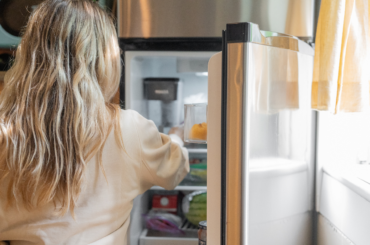Childhood trauma is a widespread issue, with an estimated 15 to 43 percent of girls and 14 to 43 percent of boys experiencing at least one traumatic event. Up to 15 percent of girls and 6 percent of boys may develop post-traumatic stress disorder (PTSD).
Creating a safe, supportive environment is essential for helping children heal from trauma because it provides the space for them to process their experiences.
Understanding childhood trauma
Childhood trauma occurs when a child experiences or witnesses deeply distressing events, such as abuse or neglect. Not all negative events lead to trauma, but certain adverse childhood experiences (ACEs) can have lasting impacts. The effects of childhood trauma can carry into adulthood, and contribute to mental health struggles, chronic health issues, or substance use problems.
Emotional and behavioral signs of trauma
Emotional and behavioral signs of childhood trauma can appear in several forms. Emotionally, children may feel intense fear, isolation, mistrust, low self-worth, or depression, which can continue into adulthood. This can affect their ability to regulate emotions and maintain healthy relationships.
Behaviorally, trauma often leads to risky actions, such as unsafe sexual behavior, delinquency, or substance abuse. Additionally, survivors may exhibit hypervigilance, which involves staying on high alert even when no danger is present. This reflects the lasting impact of their traumatic experiences.
Physical signs of trauma
Childhood trauma can lead to significant physical health issues due to the body’s stress response, which releases hormones that trigger a fight-or-flight reaction. This can result in a range of conditions, including heart problems, diabetes, malnutrition, high blood pressure, and vision problems.
These challenges highlight the need for addressing both mental and physical health when healing from trauma.
The importance of a safe and supportive environment
While most efforts have focused on treatment, prevention is also key to reducing the impact of trauma. These efforts include positive parenting and family support.
Moreover, safe and stable relationships and environments can help reduce the long-term negative effects of adverse childhood experiences (ACEs). A 2022 study examines data from over 30,000 households with children who took part in the 2018 National Survey for Children’s Health to explore how ACEs, supportive neighborhoods, and overall health are related.
The findings show that living in a safe neighborhood can diminish the adverse effects of ACEs on health. This results in lower risks of poor health outcomes. Similarly, supportive neighborhoods, where neighbors help each other, watch out for children, and offer assistance during tough times, also have a beneficial effect.
Practical ways to create a safe space at home
For children who have experienced trauma, a nurturing and secure environment can help them feel protected, valued, and loved.
Establish consistent routines
Consistent routines help create a sense of stability and security by letting kids know what to expect. This can reduce anxiety and provide comfort.
Routines help regulate emotions, improve behavior, and encourage a feeling of control, which is crucial for children who may feel vulnerable or unsafe due to past experiences.
Set consistent mealtimes, bedtimes, and homework schedules. Make transitions from one activity to the next predictable, so your child knows what’s coming. Even simple rituals like a bedtime story or a family dinner can provide comfort.
Encourage open communication
Creating an environment where kids feel comfortable expressing their thoughts and emotions without fear of judgment is essential for emotional safety. When children know they can talk openly, they are more likely to share their concerns, fears, and needs.
Open communication helps kids process their emotions, build trust with caregivers, and develop problem-solving skills.
Actively listen to your child when they speak, validate their feelings, and encourage them to talk about their day, thoughts, or any issues they may have. Avoid dismissing their emotions, and reassure them that it’s okay to express difficult feelings like anger or sadness.
Use mindfulness and relaxation techniques
Mindfulness and relaxation techniques can help children manage stress and anxiety, especially if they are dealing with trauma. These practices teach kids how to calm their minds and bodies and provide them with tools to self-regulate during times of emotional distress.
Mindfulness helps kids become more aware of their feelings and reactions without feeling overwhelmed, while relaxation techniques can reduce the physical symptoms of stress.
Introduce deep-breathing exercises, guided meditation, or simple yoga stretches. Encourage kids to practice these techniques regularly, especially when they feel anxious or upset. You can also make mindfulness part of their routine by practicing together as a family.
Create physical safe spaces
A physical space where children feel secure and comfortable can be incredibly comforting. This space can be a quiet corner, a cozy reading nook, or a specific room where they can go to relax or play. Having a dedicated space can provide kids with a sense of control and refuge.
Physical safe spaces give kids a tangible place to retreat when they feel overwhelmed, stressed, or in need of alone time. This is particularly helpful for children who may have experienced trauma or instability.
Designate a special area in your home with comfortable seating, calming colors, and activities they enjoy, like books, toys, or art supplies. Make sure this space is free from distractions or stressors, and encourage your child to use it whenever they need a break.
Supporting long-term healing
Healing from childhood trauma requires understanding its lasting effects and committing to a process of recovery.
Acknowledging the trauma is the first step in moving forward and addressing the feelings of shame or guilt it might cause. Help your child identify triggers and use techniques like deep breathing or visualization to calm themselves.
Therapy can help children understand and reframe traumatic experiences. Therapists can provide guidance and coping strategies for managing trauma’s effects on daily life.
Believe in your child’s resilience
Children are incredibly resilient. With your love and support, they have the strength to heal, grow, and thrive despite their past. Trust in their ability to overcome, and let them know they can heal.







